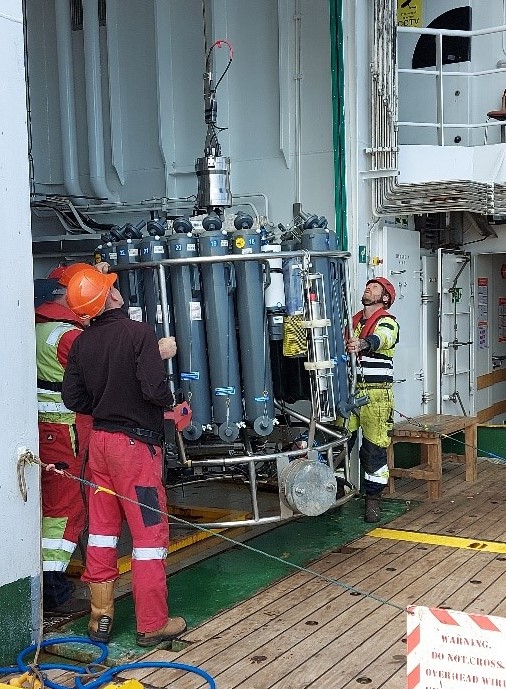The Porcupine Abyssal Plain Sustained Observatory contributes to global ocean observations by maintaining a long-term time-series of biogeochemistry and ecological variables. This is achieved by equipping the site with in situ sensors and doing annual sampling cruises. Despite increased technological capability of sensors and platforms we use at PAP-SO and the huge geographic reach of programmes such as Argo, many parts of the ocean are not observed in sufficient detail to understand long-term change or spatial variation.
One way in which scientists can expand our ocean observations is to make use of other ocean stakeholder’s infrastructure. Equipping commercial vessels with sensors or samplers to monitor the oceans during their operations has a long and productive history and have been valuable in our studies at PAP-SO. Ferry Box systems on ships of opportunity passing the PAP-SO have helped us understand CO2 uptake in the NE Atlantic while the Continuous Plankton Recorder can help us interpret our own time series observations.
This year on JC247 we are using some instruments designed for integration into remotely operated vehicles run by global offshore service provider Subsea7, through BORA Blue Ocean Research Alliance®. In this project, engineers at NOC developed microfluidic ‘lab on chip’ instrument packages designed to measure carbonate chemistry in the ocean. Known as BORAbox®, these are fitted to ROVs during their routine operations, accessing areas of ocean around the world where Subsea7 vessels are operating and at depths where these measurements are extremely sparse.
BORAbox® measures pH and total alkalinity (TA), and several are already in operation across the Subsea7 fleet. The opportunity to deploy them at PAP is perfect to further test them in challenging conditions. It is especially beneficial because at PAP-SO we measure similar variables using several different systems, so we can make inter-comparisons. Throughout the JC247 BORAbox® has been mounted on the CTD (conductivity, temperature, depth) rosette to continuously measure pH and TA while discrete water samples are being collected in sample bottles on the rosette. The data collected by the sensors can then be compared to the results from discrete water samples.
These inter-comparisons help to assess and improve the data quality gathered by the BORAbox® under in situ conditions. Deploying BORAbox® more broadly across the oceans, will contribute to a better understanding of global challenges such as ocean acidification.
